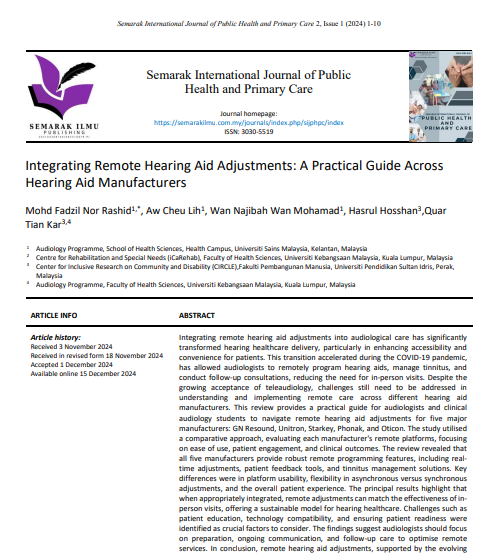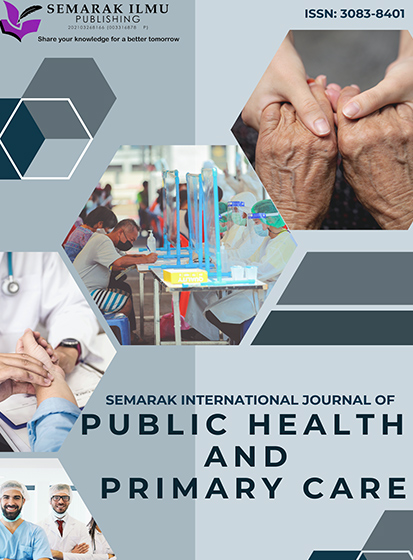Integrating Remote Hearing Aid Adjustments: A Practical Guide across Hearing Aid Manufacturers
DOI:
https://doi.org/10.37934/sijphpc.2.1.110bKeywords:
Remote hearing aid, teleaudiology, practical, audiology students, audiologistsAbstract
Integrating remote hearing aid adjustments into audiological care has significantly transformed hearing healthcare delivery, particularly in enhancing accessibility and convenience for patients. This transition accelerated during the COVID-19 pandemic, has allowed audiologists to remotely program hearing aids, manage tinnitus, and conduct follow-up consultations, reducing the need for in-person visits. Despite the growing acceptance of teleaudiology, challenges still need to be addressed in understanding and implementing remote care across different hearing aid manufacturers. This review provides a practical guide for audiologists and clinical audiology students to navigate remote hearing aid adjustments for five major manufacturers: GN Resound, Unitron, Starkey, Phonak, and Oticon. The study utilised a comparative approach, evaluating each manufacturer's remote platforms, focusing on ease of use, patient engagement, and clinical outcomes. The review revealed that all five manufacturers provide robust remote programming features, including real-time adjustments, patient feedback tools, and tinnitus management solutions. Key differences were in platform usability, flexibility in asynchronous versus synchronous adjustments, and the overall patient experience. The principal results highlight that when appropriately integrated, remote adjustments can match the effectiveness of in-person visits, offering a sustainable model for hearing healthcare. Challenges such as patient education, technology compatibility, and ensuring patient readiness were identified as crucial factors to consider. The findings suggest audiologists should focus on preparation, ongoing communication, and follow-up care to optimise remote services. In conclusion, remote hearing aid adjustments, supported by the evolving teleaudiology platforms of leading manufacturers, are set to play an essential role in future audiological care. This guide provides essential insights into the practical application of these technologies, enhancing the delivery of patient-centred, remote hearing healthcare.













